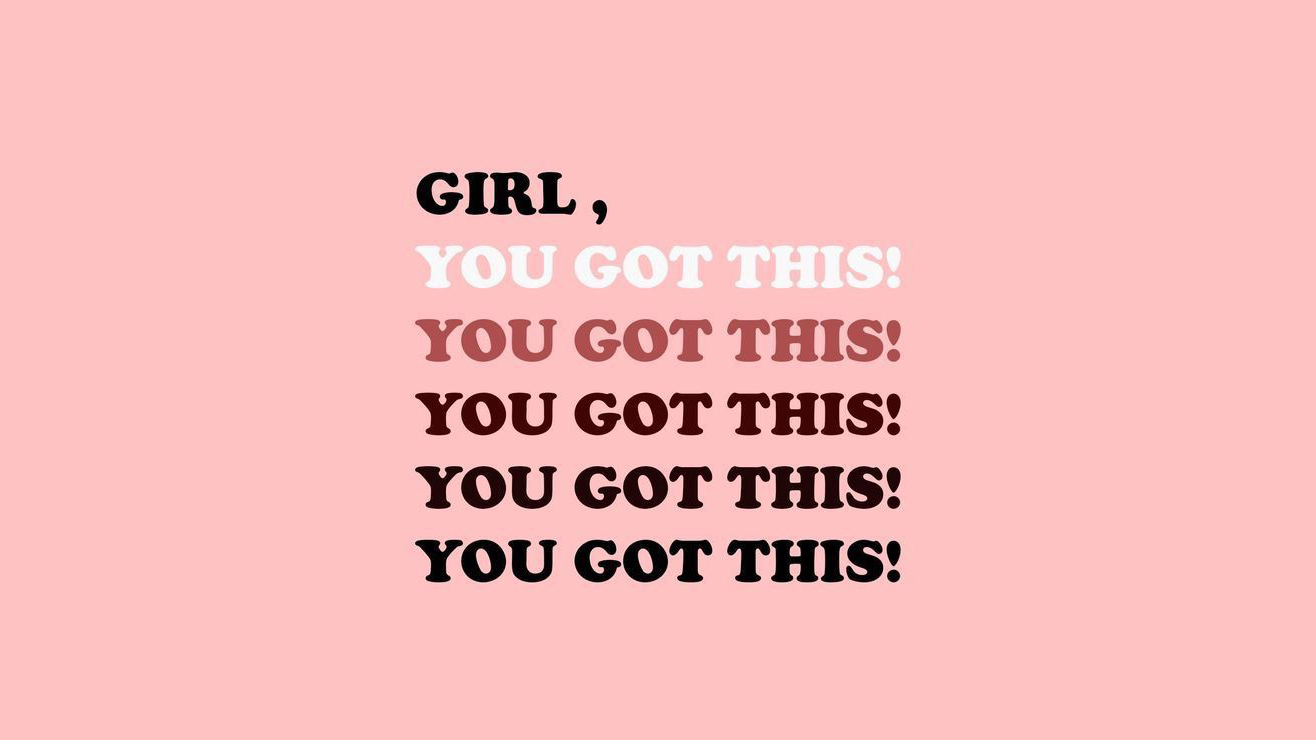I stumbled upon the Lean In brand of corporate feminism some years ago while I was on a leadership development program at a well-known global firm.
The author of the book, Sheryl Sandberg, was talking to our cohort online, emphatically calling out the need for women to have a can-do attitude: if you worked hard enough and asserted yourself, you can have it all at work and at home. You got this!
I was star struck and inspired. I desperately wanted to believe her. Her message was appealing. It was individualistic and solution oriented. It placed power into the hands of women. Here was a Silicon Valley billionaire, and a mother, who seemingly had it all.
She was suggesting that women simply needed to reclaim their agency, end their self-limiting beliefs, roll up their sleeves and lean in. Because business is, after all, a meritocracy.
But here’s the thing. It’s not.
As a woman of color and a working mother who did not have the privileges of a wealthy, white, billionaire, I was acutely aware from lived experience, that societal, systemic and structural biases neutralized my efforts, regardless of how hard I worked, how strongly I advocated for myself or how much accountability I took on.
“We thought that it would include us. You can’t talk about advancing women in the workplace if we’re not talking about all women. And as women of color, we’ve BEEN leaning in.” Mindi Harts
She was taking questions. I tentatively unmuted and raised my hand. My mouth was dry, my heart was racing. Here I go, I’m going to lean in now.
“What if that’s not enough?”
There was an awkward silence. If she was taken aback, her eyes didn’t show it. She smiled wider.
“Well, if you don’t try hard enough, it may not be. Try starting a circle, seek the counsel of other women, practice the work! Any more questions?”
My executive sponsor, a white male, was on the call. He was a strong advocate of Sandberg’s work. I could feel his eyes burning into me all the way from Chicago. I could only imagine what he was thinking. Of all the questions she could ask, why that?
I was mortified. I wanted the earth to open up and swallow me. Had I just asked a stupid question? Could she possibly be right? Was I just simply not trying hard enough? Or worse, was I avoiding taking personal accountability? Could I really just rise above gender and racial inequality through personal advocacy?
“Its not always enough to lean in, because sometimes that s**t doesn’t work.” Michelle Obama
My cohort started a Lean In circle. We met regularly and practiced the work. I was the only woman of color and a mother in the circle. While I practiced her advice diligently over the years, I was left feeling betrayed, lonely, confused, and overwhelmed with self-doubt.
And then Michele Obama said, “Its not always enough to lean in, because sometimes that s**t doesn’t work”.
Along with millions of women the world over, I breathed a sigh of relief. Those were the words of validation we were all waiting to hear. And who better to deliver it than a force like Michelle Obama — a cultural icon who was successful and relatable.
Lean In inspired outrage from the start.
Yet despite many critics panning Sheryl Sandberg’s advice as irresponsible, only for other wealthy white women and declaring that it ignored structural problems in society, her message largely won over the feminist mainstream, and she became one of its iconic leaders.
But over time, the support of even her most die hard super-fans started to wane. As parenting statuses changed and women of color still battled with the systemic biases which held them back, Sandberg’s work was met with increasing criticism. To her defense, after her husband’s death, Sandberg publicly admitted that she didn’t fully understand what single mothers go through or how hard it is to lean in when you feel overwhelmed at home.
But there is something inherently more problematic with Lean In’s manifesto.
Ownership of responsibility
It places the responsibility on women alone to fix the problem of inequality, whilst ignoring the social and structural pressures which neutralize their efforts. Women operating at the intersection of race and gender feel it the hardest as they have to navigate both gender and racial inequality. Companies do not have to become more accommodating and less biased if all that’s needed for more women to rise is for them to change their behavior. Lean In put all the onus on women and none on institutions and society, when in fact the experiences of women and academic research consistently proves that even the most well intended businesses are not meritocracies.
“I no longer ascribe to her view of corporate feminism as a heroic thing. Its inherent message is that corporations and workplaces are basically benevolent and good.” Katherine Goldstein, Double Shift
Harvard Business Reviews “Lean In” Messages and the Illusion of Control, tests the hypothesis.
2,000 Americans were surveyed, half of them saw texts and videos explaining Sandberg’s DIY approach to fighting discrimination and the other half saw materials that stressed social factors holding women back. The researchers then surveyed everyone about their beliefs around gender disparities.
The good news is that Lean In is empowering. After reading Sandberg’s advice, participants believed women had the ability to overcome obstacles, but they also believed that women should overcome these obstacles, thereby also blaming women who didn’t succeed, even if their problems were objectively caused by bias. This belief, in turn, made them more skeptical of broader initiatives that might tackle that bias.
“We are by no means suggesting Sandberg intended to blame women for inequality,” the psychologists behind the study conclude in their HBR write-up of the findings. “But we do fear that Lean In’s main message — which emphasizes individual action as a way to address gender inequality — may lead people to view women as having played a greater role in sustaining and even causing gender inequality.”
“We’re just in a moment culturally where we’re starting to say: Maybe it’s an underlying structure problem. Maybe it’s not just about a mom working as hard as she can or a person of color working as hard as they can,” said Kingo, the deputy editor of Working Mother magazine. “I think basically what we’ve learned is that Lean In hasn’t worked.”
Back lash effect
Lean In advocates that women should unapologetically advocate for themselves, and negotiate as strongly as men do for raises, yet dominant women are perceived as less likable and less hireable than men. A 2016 survey of more than 30,000 employees found that women who negotiated for promotions were 30% more likely than men to be labelled intimidating, bossy or aggressive. I often hear when coaching and mentoring high performing women, that when they ask for what they believe to be worth, or if they set appropriate boundaries, it is suggested that they are too ambitious, impatient, aggressive and intimidating and they often face career limiting backlash as a result.
Placing responsibility on women required no upheaval of the status quo
As I had personally experienced, when my efforts failed to produce the results I wanted, I was racked with self-doubt, eventually questioning my own abilities. The Lean In manifesto was conveniently appealing to leaders in my organisation. Placing responsibility on women required no upheaval of the status quo, even when evidence consistently showed that women are judged more harshly than men and are more likely to be blamed for joint failures, regardless of their efforts. This truth hits harder for women of color.
Collective problems need collective solutions
Of course, there are messages in lean In that still hold value, that women should advocate for themselves at home and at work, that they should champion their own projects and ideas and build communities of support.
But the underlying aspects still remain problematic. Lean In’s focus made bringing more women into the workplace a priority over changing the structure of workplaces, setting many women up for disillusioning and painful experiences.
Sandberg herself admits that her efforts have not been enough to move the dial on representation of female leaders in government and corporate. I hope that as more real conversations are happening, there will be focus on the true roots of gender inequality at work and at home and on shifting the onus being on the individual, to recognising that collective problems need collective solutions.
Aspects of Lean In’s manifesto still find its way into social media and pop culture. I cringe when “affirmations” and “hard truths” pop up on my timeline. You Got This! The problem is not your boss or being overlooked for that promotion, its your thoughts about those things! The world changes when you take ownership, whatever it takes, no excuses!
I always take a deep breath and diplomatically offer an alternative view.
In the face of growing criticism, and Michelle Obama’s final fatal blow to the Lean In brand, the organisation has begun the process of reinventing, or as their supporters assert, clarifying, their message.
The organisation published a fourth annual study with McKinsey called “Women in the Workplace,” and has created a new workplace justice-oriented deck of cards called 52 Ways to Fight Bias. They have launched Lean In Women of Colour in an attempt to hone in on the specific biases and structures which address the impact of intersectionality.
Rachel Thomas, president and co-founder of LeanIn.org, and Sandberg’s long time friend, wrote an op-ed for Fortune arguing that Sandberg’s message was often reduced and misrepresented. “We conduct the largest study of the barriers women face in the workplace, especially women of color. And we run programs that raise awareness of issues critical to advancing women, from gender bias to equal pay.”
Thomas has been quick to support Sandberg in the face on ongoing media criticism over her role at Facebook, calling it unfair and sexist. In a New York Times interview she brought up an “intellectual conversation” over how female leaders are perceived when they do something bad. “It was just interesting the complexity around gender and expectations.” she added.
So I guess, Ms Thomas, leaning in isn’t enough after all.


